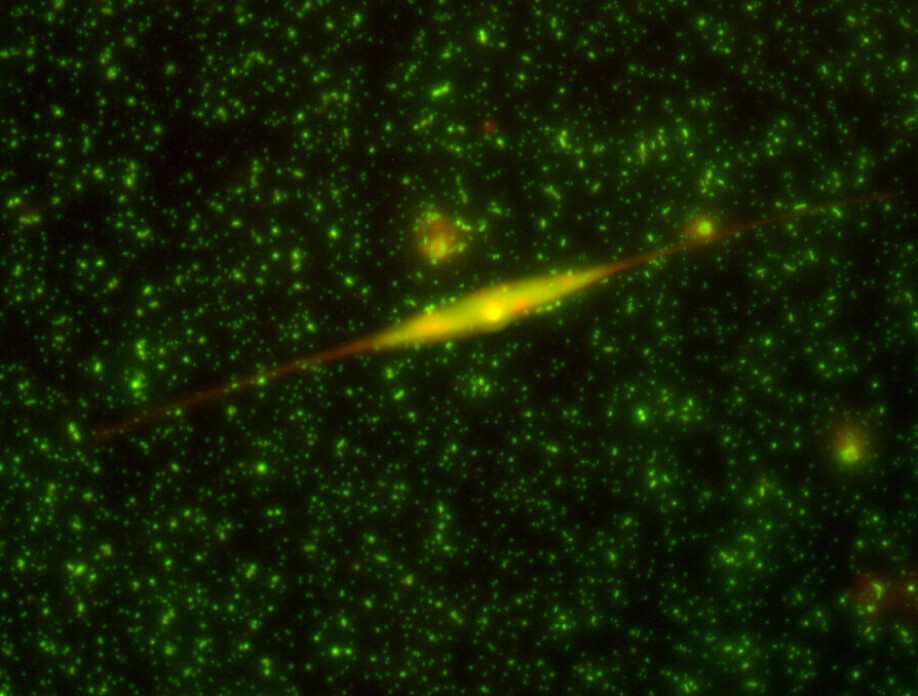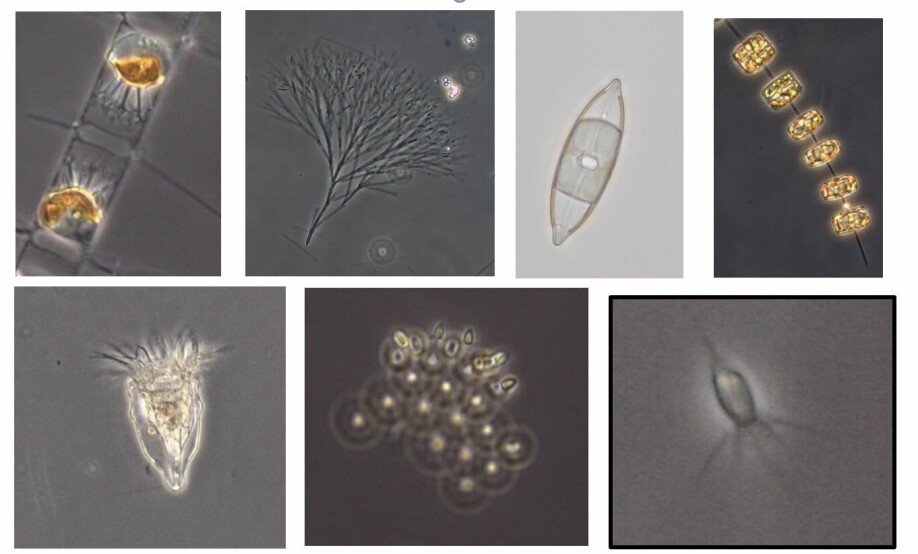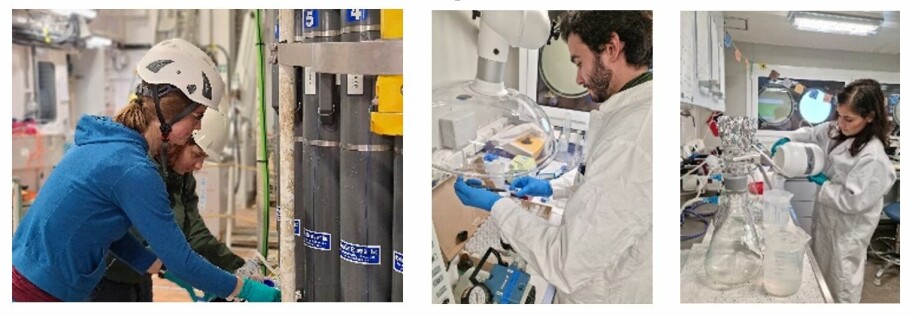The tiniest do the heavy lifting
– Who are they and what do microbes do in the Arctic Ocean?
A microbe? That’s an organism whose body is made of a single cell. Some microbes like bacteria are cells that look completely different from our own body cells, whereas others are built just like our own cells are. The biodiversity in microbes is staggering. Almost all of the genetic diversity we find on Earth is encoded in microbes and their appearance can be as different as worms and elephants! Microbes are everywhere. If you could miraculously remove all other organisms on Earth and at the same time make the microbes become visible with your naked eye, you would still see the contours and whereabouts of all the plants and animals and landscape around them! In the ocean alone, there are a million times more microbes than stars in the entire universe!

In the central Arctic Ocean, where we are right now, microbes definitely steal the show of life - only few other organisms thrive in this harsh environment. Studying the microbes living here is thus an important part of our mission. In the course of our cruise we have found them free-floating in the water column or attached to sea ice, living either inside brine channels or growing as mats underneath the ice. As we moved northward, larger waterborne microbes became less abundant, but the sea ice community is still hanging in there!
Some microbes (most of which have cells that look similar to our own) can convert carbon gas into biomass, producing oxygen as a by-product, just like trees do on land (they are called “photosynthetic”), whereas other microbes need to eat (parts of) other organisms to get organic carbon building blocks for their bodies. We have everything to thank for the photosynthetic microorganisms in the ocean! They were the ones turning Earth’s atmosphere into an oxygen rich medium that we can breathe some 2.8 to 2.45 billion years ago! Marine microorganisms still produce roughly half of the oxygen we all breathe today.

Bacteria versus Virus
Most bacteria in the Arctic Ocean cannot produce oxygen. Their sheer abundance is mind-blowing however; imagine you were brave enough to take a bath in the Arctic ocean (we are currently measuring freezing temperature of -1.8 °Celsius in the surface water) - then a single droplet of sea water running down your cheek would harbor a million bacteria!
Even more impressive, there are about 10 million viruses in that drop of water! Fortunately, most marine viruses mean no harm to us – it’s the bacteria that have to worry!
When bacteria get infected by viruses they explode and turn into food for other microorganisms. In an environment where vertical mixing of the water column is limited due to strong density gradients, just like here in the central Arctic Ocean, this “recycling” of organisms near the surface is critical for life to persist since supply of new nutrients from deeper waters is very limited. Bacteria also disintegrate other dead microbes, slowing down their sinking and thus further helping to retain essential nutrients near the surface.

Bacteria have a tough life
Not only are bacteria under constant viral attack, they are also hunted by ferocious and extremely efficient predatory microbes. Besides, they have to share the little nutrients we find in the Arctic Ocean with their beautiful “cousins”, the phytoplankton (photosynthetic microorganisms). Under optimal growth conditions, these phytoplankton can monopolize limiting nutrients, creating a short-cut through the microbial food web with reduced recycling that bacteria and viruses stand for, resulting in an efficient transfer of energy from the bottom of the food web to animals like shrimp and fish. Events like that are the reason why Norway could rise as a nation from fisheries. Although regularly occurring in sub-polar regions like the Barents Sea or Norwegian Sea, such optimal growth events are rarely found in the central Arctic Ocean. Understanding how this might change in the future is one of our research goals.

As you see, microbes show many different faces, linking ocean chemistry to harvestable resources, and we have not even started to talk about the fascinating evolutionary games they play!
Rapid co-evolution between bacteria and viruses can tell us a whole lot about the development of infectious diseases like the Covid-19 for instance... I would be happy to talk more about this on our next cruise!
Please follow us on our journey to the Arctic!







